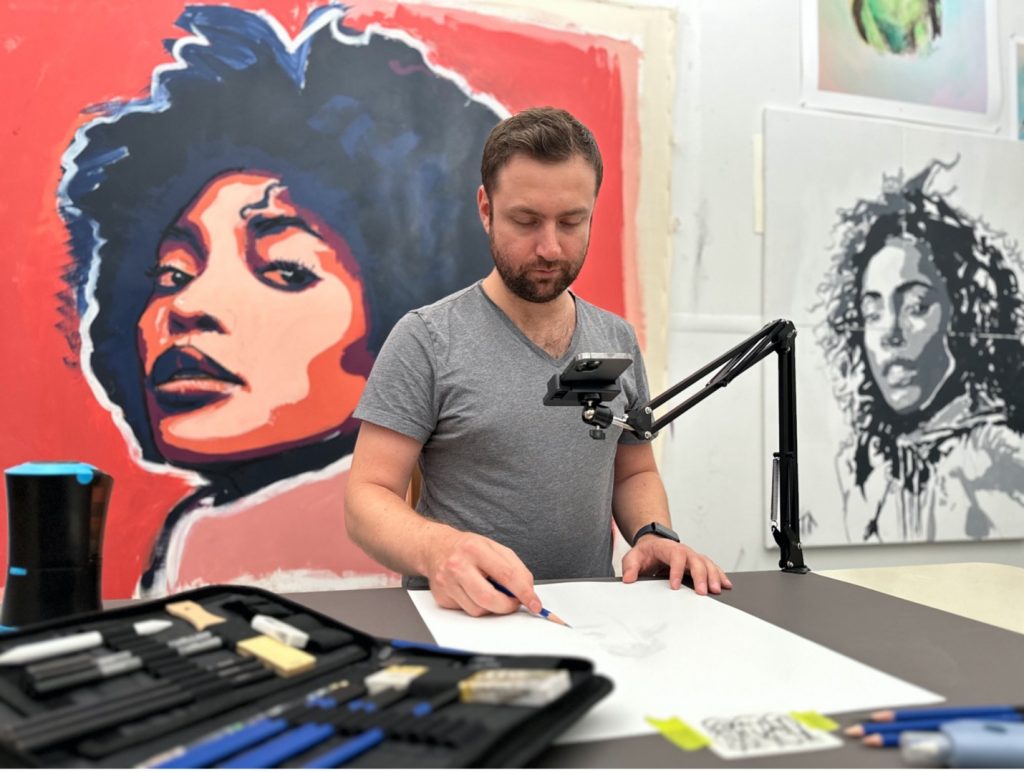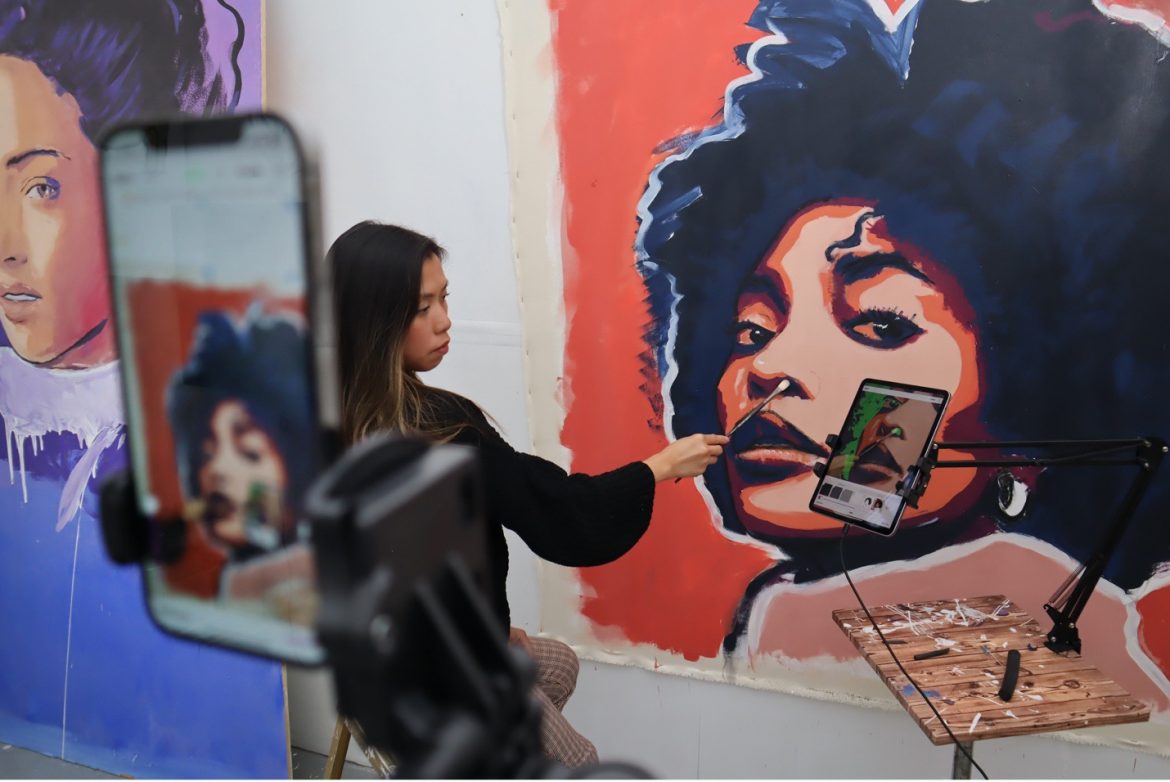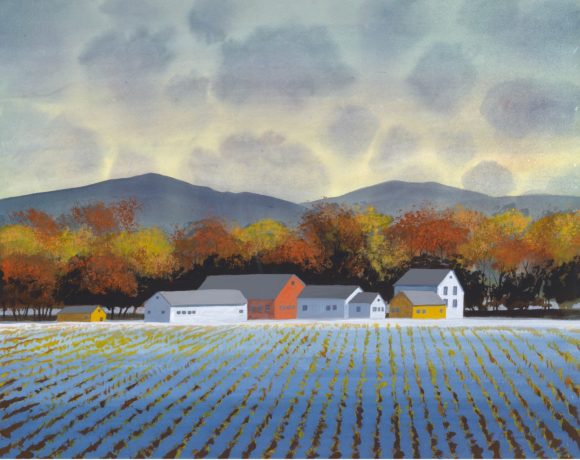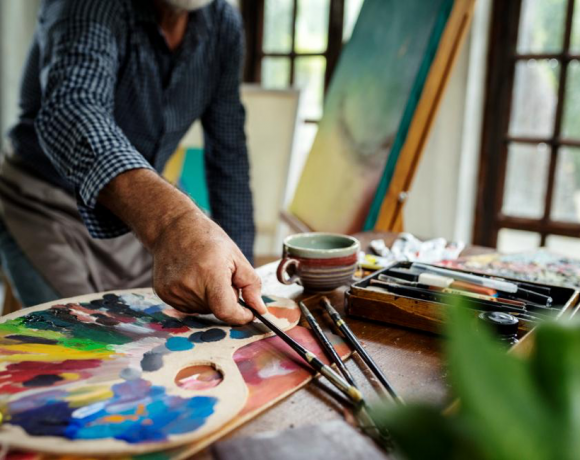The ongoing debate about the influence of advanced technology on the art world has led to divergent perspectives. Some individuals contend that technology undermines traditional artistic practices, while others embrace its capacity to foster creativity and innovation. This article will discuss how cutting-edge technology, as demonstrated by the Da Vinci Eye app, can provide traditional artists with groundbreaking tools to produce, promote, and sell their creations. By exploring how advanced technologies can enrich traditional art practices and sharing inspiring stories from our user community, the Da Vinci Eye aims to challenge the stigma associated with art and technology. The modern age of technology, with its innovative tools, is ultimately paving the way for a new artistic renaissance.
Rediscovering the Roots of Artistic Progress:
Throughout history, artists have led the charge in embracing scientific and technological advancements. Be it the adoption of newly discovered pigments or the pioneering use of optical devices like the camera obscura and lucida, artists have consistently sought inventive methods to produce realistic and captivating masterpieces. In the past, these developments were lauded and adopted by renowned artists.
Before the advent of cameras, the only means of capturing someone’s likeness was through an artist’s rendering. Consequently, artists relied on every available resource to fulfill their clients’ expectations. Far from being hesitant to use technology, artists kept their technological techniques and tools a closely guarded secret, due to the immense power and prestige they held. In contrast, contemporary views on technology in the traditional art world often label any form of technological assistance as “cheating,” clashing with the rich history of artistic ingenuity and exploration.
Groundbreaking Advancements
The camera obscura, an ancestor of modern photography, is an optical instrument dating back to the 13th century. It comprises a dark chamber or enclosure with a tiny aperture on one side, which allows light to enter and project an inverted image of the external scene onto the opposite surface. Although ancient Greek and Chinese philosophers were familiar with the camera obscura’s principle, it wasn’t until the Middle Ages that it found its place as an artistic aid. Artists such as Leonardo da Vinci and, subsequently, Canaletto and Vermeer utilized camera obscura-type devices to produce meticulously detailed and accurate drawings and paintings.

Photo provided by Sam Gherman
By examining the projected images, artists gained a deeper understanding of perspective, light, and shadow, integrating these elements into their work with exceptional accuracy. The camera obscura not only helped artists hone their techniques but also inspired them to investigate new subjects, laying the groundwork for the realism and naturalism that defined Renaissance art and beyond.
These breakthroughs have significantly contributed to the growth and appreciation of art, fostering a more profound comprehension of the creative process. Far from undermining art, these tools have propelled artists to new heights and inspired continued innovation. Consequently, this has broadened the scope of artistic possibilities and heightened the enjoyment of art for both creators and audiences. Historically, the fusion of technology and art has proven to be a potent alliance that promotes progress and elevates the artistic experience for all.
Da Vinci Eye: Fusing Art and Technology:
Da Vinci Eye is committed to revitalizing the bond between technology and traditional artists. The objective is to integrate advanced tools, such as augmented reality, into the conventional artist’s repertoire. We aim to prove that by harnessing technology, artists can improve their creative processes, broaden their reach, and engage with their mediums in ways never imagined.
For example, the Da Vinci Eye app enables artists to trace images onto any surface using augmented reality, acting as an art projector or modern camera obscura. This feature alone has already aided thousands of artists in refining their skills and realizing their visions. This trailblazing approach builds on the long-standing tradition of artists employing technology to elevate their work while also adapting to the contemporary digital landscape. The idea itself is hundreds of years old, a modern take on a camera lucida, however, the adaptation into a digital form makes it much easier and practical to use for the everyday artist.

Photo provided by Sam Gherman
Challenging the Criticism: The Role of Technology in Unleashing Artistic Potential
One criticism often encountered by the Da Vinci Eye developers, quite surprisingly, is that the technology makes creating art too easy. It’s a baffling reaction, especially considering that most art teachers dream of hearing such words from their students. While it’s true that the artwork of a complete beginner may have accurate proportions and thus look better with the app, the creativity and the process of creation remain entirely in the hands of the artist. Like a ruler, the app simply serves as a tool to be wielded by an individual who wishes to create art, and the outcome is ultimately determined by the artist’s experience.
Moreover, when new artists start, they often feel disheartened because their initial work doesn’t meet their expectations. By using this app, they have good results and feel inspired to continue creating.
Empowering Creativity: A Visually Impaired Artist’s Inspiring Journey with Augmented Reality
In a conversation with a gifted visually impaired artist who has used the Da Vinci Eye app, an uplifting story was revealed that exemplifies the potential of technology in the hands of a resourceful person, no matter their physical constraints. She mentioned that, despite her visual challenges, her passion for art remained strong, and she constantly sought avenues to express her creative side.
When tested, she discovered the app’s augmented reality feature, along with the magnification options, allowed her to experiment with composition and perspective in ways she had never imagined possible. The tool helped her not only create several pieces she was proud of but also boosted her confidence in her artistic capabilities.
Her experience demonstrates the ability of technology to not just improve an artist’s skills but also to eliminate obstacles, enabling them to explore their creativity in novel and thrilling ways. By harnessing technology, she managed to overcome her limitations and achieve new heights in her artistic career.
Technology as an Enhancement
As technology continues to advance, it’s essential to understand how it can enhance the artistic experience instead of viewing it as a danger to art’s authenticity. By connecting art and technology, we can enable artists to extend their creative limits and present their work globally in unparalleled ways. Art’s future resides in the balance between traditional methods and modern innovation. The Da Vinci Eye is one way of providing a digital art tool that assists artists of all skill levels in honing their abilities while also motivating them to pursue their creative endeavors. As we challenge the stigma surrounding technology’s role in art, it may pave the way for a more inclusive and dynamic artistic landscape.
_______________________________
Author’s bio
Sam Gherman is the multitalented founder of Da Vinci Eye, the viral AR app company for non-digital artists. With the goal of giving everyone the ability to create incredible artwork, their flagship app has reached #2 top paid app spot in the US, Apple’s Top Paid Apps of 2021, and is currently one of Apple’s Top 100 Graphics and design apps since switching to a freemium model. Sam, a self-taught developer and creative professional by day and part-time magician/mentalist by night, has bootstrapped, designed, developed, and marketed Da Vinci Eye with his partner for the last 7 years.









NO COMMENT